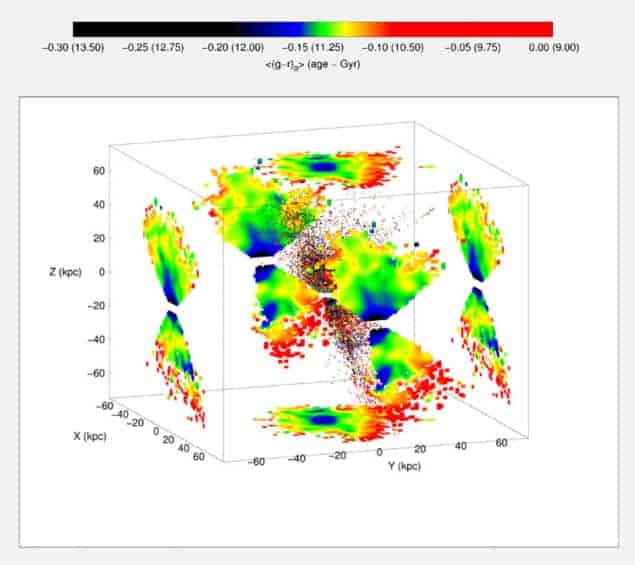Flash Physics is our daily pick of the latest need-to-know developments from the global physics community selected by Physics World‘s team of editors and reporters

Revamped ‘Einstein’s fridge’ bags UK Dyson award
The designer of a simple refrigerator, which cools vaccines being distributed in remote regions of the world, has been awarded the 2016 UK James Dyson Award, worth £2000. William Broadway, an industrial design and technology student at Loughborough University, invented the device, called ISOBAR, to help stop vaccines from spoiling before they reach recipients. It contains a mixture of ammonia and water and is primed with an external heater, which causes the mixture to separate. The ammonia is held in a separate chamber and, when cooling is required, the ammonia and water are allowed to recombine in a process called two-phase absorption refrigeration. The process was first patented in 1906 by Albert Einstein and was used commercially in the early 20th century before being largely forgotten.
Australian gravitational-wave observatory announced
The Australian Research Council (ARC) has announced a new A$31.3m ARC Centre of Excellence for Gravitational Wave Discovery, which will be hosted by Swinburne University of Technology. The centre, to be named OzGRav, will open in early 2017 and is set to boost the country’s work on gravitational waves, which were first detected by scientists working at the US Advanced LIGO (aLIGO) detectors in Washington and Louisiana earlier this year. OzGRav also aims to help improve aLIGO’s sensitivity, thus increasing the volume of the universe that can be probed by an order of magnitude. “Through this centre, Australian scientists and students will have the opportunity to fully participate in the birth of gravitational wave astronomy,” says Centre director Matthew Bailes. “It will enable us to develop some amazing technologies like quantum squeezing to further enhance the detectors, supercomputers and advanced algorithms to find the waves, and these will lead to a revolution in our understanding of the universe.”
The ARC has also announced eight other Centres of Excellence that will receive funding in 2017 including the ARC Centre of Excellence for All Sky Astrophysics in 3 Dimensions, at the Australian National University; the ARC Centre of Excellence for Quantum Computation and Communication Technology, at the University of New South Wales and the ARC Centre of Excellence in Exciton Science, to be established at the University of Melbourne.
Nobel laureate Yang objects to China’s super-collider plans
Nobel-prize winning physicist Chen Ning Yang has come out against China’s proposed plans to build a super particle collider, reports the South China Morning Post. In an article released by Yang this weekend, the laureate claims that the project does not have enough scientific value and said that the project would become an investment “black hole”, citing the cancellation by the US of a similar $3bn supercollider in 1993. Yang’s critique is the latest in the ongoing debate surrounding the project, which was proposed four years ago and would see China build a collider four times the size of the Large Hadron Collider in Geneva. According to the Post, the first stage of the project was estimated to cost 40bn yuan by 2030, and the total cost would exceed 140bn yuan when construction is completed in 2050, making it the most expensive research facility built in China.
Mapping how the Milky Way has aged
A new map showing the age and location of more than 130,000 “blue horizontal branch” stars in our Milky Way galaxy has been created by Daniela Carollo, Timothy Beers and Vinicius Placco at the University of Notre Dame in the US, and colleagues, using data from the Sloan Digital Sky Survey. The age of these very old stars can be determined by their colour alone. The map shows that older stars tend to cluster closer to the centre of the Milky Way, whereas younger stars tend to be located further out. “Once you have a map, then you can determine which stars came in first and the ages of those portions of the galaxy,” says Beers. “We can now actually visualize how our galaxy was built up and inspect the stellar debris from some of the other small galaxies being destroyed by their interaction with ours during its assembly.” The map is published in Nature and supports the hierarchical model of galaxy formation, whereby small agglomerations of stars and gas come together to form a galaxy like the Milky Way.
- You can find all our daily Flash Physics posts in the website’s news section, as well as on Twitter and Facebook using #FlashPhysics. Tune in to physicsworld.com later today to read today’s extensive news story on sending fluids round the bend.



